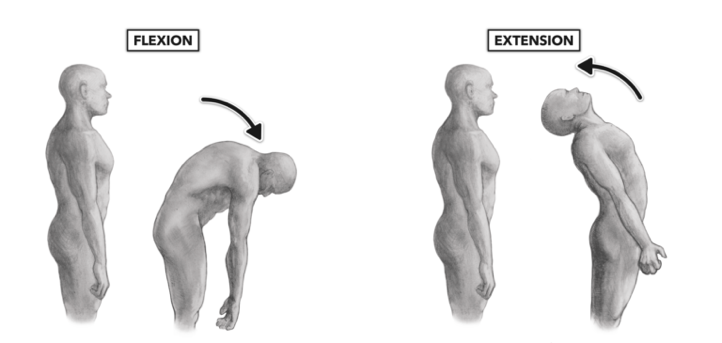There are a myriad of movement systems and programs that are available on the market. A great deal of emphasis is put on moving “gracefully”, or “effortlessly”. These movement systems pick up steam and attention because they look great (they do help some people as well), and the people demonstrating them are moving much better than the people watching the ads. These types of advertisements give people hope that they can also move that way in time if they buy the system. While these systems CAN get results, and are effective for some people, they do have gaps in who they are designed for. Exercises and movements are only as good as the muscular activation that they create. Let me repeat that again. If your exercise does not create the activation in the area that you are designed to feel it in, the exercise is not only doing you almost zero benefit, but it is likely strengthening compensatory patterns that can cause you harm. While this is controversial, I will give you several examples as to why it is almost always true.
A gym goer goes for a last set of crunches and feels an ache in his back. Crunches require rounding of the spine and are not a purely abdominally dominate movement. Additionally, that rounding puts pressure on discs. The exercises goal was to activate the abdominals, but instead they were activating their back in a potentially dominant way through the movement. This is not done on purpose, but simply because we lack conscious awareness of our muscular activation. This is common in not just everyday people, but high level athletes as well. Notice the rounding occurring in the picture below.

A runner goes for a daily run and feels extra tightness/tension through the hamstrings after going up a hill. The running itself is a good activity, but his activation and perhaps execution of his running was off, placing a greater strain on the hamstrings. The runner feels very little attention/activation to his gluteals when asked, but before becoming aware of the lack of activation in the gluteals, had no idea that was a problem. Without being aware of a potential problem, we are almost powerless to prevent it.

A person in a yoga class goes to work into the bridge pose and immediately feels a small pain in their lower back. The yoga movement is not to blame for this problem. The person’s glutes did not primarily activate in the bridging movement, therefore the exercise would do more harm than good for this person. Were they aware of this? No. They would simply tell you that they have a bad back. Did they have any awareness of what activation the movement was designed to create? No. So they attempted the movement, felt pain, and assumed something was wrong with their spine/low back. Notice in the picture below, they are actually using a block to replace natural glute activation in this bridging position.

We can start to see from the above examples that while exercise and movements are designed to be healthy and get certain muscles to activate- they do not always successfully do so. This is why so many people end up injuring themselves in movement/health programs. The activation was flawed, so they were loading the wrong part of their body. Remember that this entire paradigm that I have explained is on a sliding scale. The worse your ability to primarily activate in the right area of the body, the more your body has to compensate for that failed activation in the movement you are doing. As we continue to do these exercises and movements- oblivious to our internal muscular activation and stability, we actually make the problem worse. We start to do the movements for longer, and we up the amount of reps/weight that we use. We force greater and greater compensation in an already weakened system. Eventually, injury/pain/tension is the result.

So we understand that many of us are likely not ready to start moving in an athletic way that is sustainable to the body. Many of us continue to injure ourselves repeatedly in a cycle of frustration. So we come to the problem that many of these movement/programs have. They do not retrain proper spinal positioning, so your body is forced to constantly compensate for a spine that is either in flexion, or in extension. The impact of this compensation can be immense. I have clients who had complete relief of shoulder and neck tension just because we were able to address the extension issues they had in their spine. Consistent postural extension is the most common pattern I see that correlates strongly to clients that have had lower back/SI issues. When we have addressed this pattern, these issues have almost completely disappeared.

Now you are likely thinking, “How can I shift/change the alignment of my spine? I go to the chiropractor for that correct?” This is true. Chiropractors serve an integral role in helping people with alignment issues of the spine. But how often do we actually HOLD these adjustments? I currently am working with several Chiropractors including Dr. Barnes in the VA WA area to help her patients hold adjustments. She runs Nu-Life Wellness Center in Battle Ground WA. She does an excellent job and I would highly recommend her services. But can you start to shift your OWN spine as well? You can. Here is how.
The process begins with laying on the floor, with your knees bent and feet on the floor. For those of you with severe back problems who can’t lay on the floor at all, I assure you that you likely can, but it will take additional programming that is beyond the scope of this post.

As you start to lay down, make sure all of your attention is on your navel and place your hands there. Focus in that location the entire time, especially if you feel your back tighten. Pull your attention away from the back, and focus on your abdominals. When you are on the ground, notice the gap between your spine/back- and the floor. Is it one inch? Two? Less? Any gap that you feel or notice is the extension pattern that I spoke of earlier. Simply place your hands on your navel and focus on your breathing. Focus where your hand is. Work into 10 breaths, feeling the muscles expand and depress as you breathe. If you feel your back start to tighten, refocus on your navel, feeling the muscles move as you breathe with your hands. After 10 breaths, take note of the gap between you and the floor. Is it less? Do this process for about 30-50 total breaths. Most of you should notice or feel the gap starting to disappear. You might even feel your spine against the ground now as well. So what happened? We just shifted the alignment of your spine with muscular and neurological control. Is this permanent? No.
In order to HOLD this position, it takes muscular activation and sequencing that is beyond the scope of this post, and is particular to each person that I work with. But I hope with the above example/intro you can start to see that you CAN impact the position of your spine, and that the possibilities are endless in regards to improving posture and health outcomes. This work is just the beginning of the process, but it is integral for the rest of the programming.
If you felt/noticed your spine lifted from the ground when on your back, or you noticed that your rib cage is “flared” that tells us a few things. Notice the picture below. He is not completely flat to the ground, and his rib cage is flared. You can even see the curve if you follow the line of his shirt. He is in extension, and likely has no idea. I have done this process with hundreds of clients. Everyone is capable of being completely flat on the ground, regardless of the shape of the spine. We do not force our backs to the ground (ever!), we simply activate different musculature and the extension is eliminated.

So we have identified the pattern, but what does it mean? Without your conscious approval, you have likely been standing and sitting like that – in extension – for years. Extended spinal positions turn off abdominals, and create hyper contraction of your lumbar and spinal extensor muscles. This causes pain/tension/instability over time. Extension also creates wear and tear on the discs as it alters the angle as to which the discs are constantly placed. Extension patterns also lead to rib issues, anterior pelvic tilt issues, and additionally tighten the hip flexors. While all of these things can be addressed individually, I have found that addressing underlying causes of them are much more effective in stabilizing and eventually strengthening the body. The goal is not improvement, the goal is to solve the problem from the ground up. I have clients who a year ago walked into my office with a constant 8 level of pain in their back. Today, they have zero. Is it possible for you? With hard work and dedication, everything that I have seen in clinic points me one direction. Yes. It is my hope that my work will continue to bring hope and answers to those who have gone years without being able to find sustainable solutions.
I wish you all the best in your search for health and happiness. Many amazing things to come as this work and methodology continues to build momentum daily, in the professional space of movement and health.
If you are interested in learning more about my work, I urge you to read my past blogs and visit my Instagram @Atheqsystem for more in depth verbal and visual explanations. If you are interested in becoming a client, I am accepting new clients both online, and in clinic and can be reached at Anton@atheqsystem.com


Very interesting work! Keep it up! Will look forward to hearing more!
Outstanding information! I love the examples. The written examples with the pictures explain things so clearly. I’m so grateful I get to be one of your clients.